Caterham Seven 170R review: Seeing the light
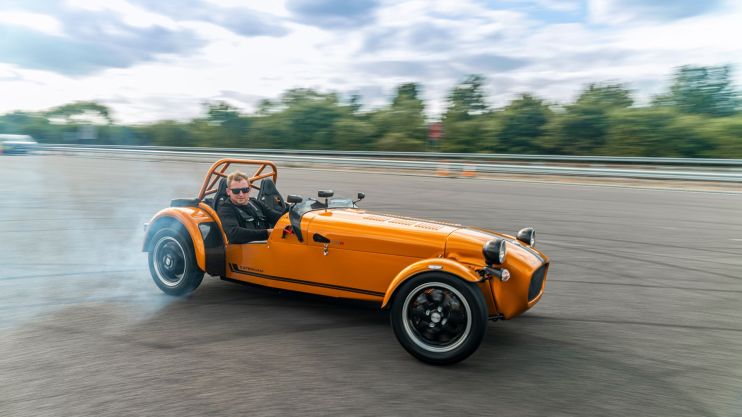
This is the first press car I’ve ever collected that comes with a crash helmet. Still, it doesn’t come with much else. There’s no windscreen, for starters, and no doors or roof. Clamber inside and you’ll search in vain for carpets, a heater or a radio. The Caterham Seven 170R is motoring boiled down to the basics.
Fittingly for a car that originates from the Lotus Seven, the 170R is the ultimate exponent of Colin Chapman’s ‘Simplify, then add lightness’ philosophy.
At 440kg, it’s the lightest production car on sale – and nearly a tonne lighter than a new Lotus Emira. It makes anything this side of a skateboard look morbidly obese.
Special kei
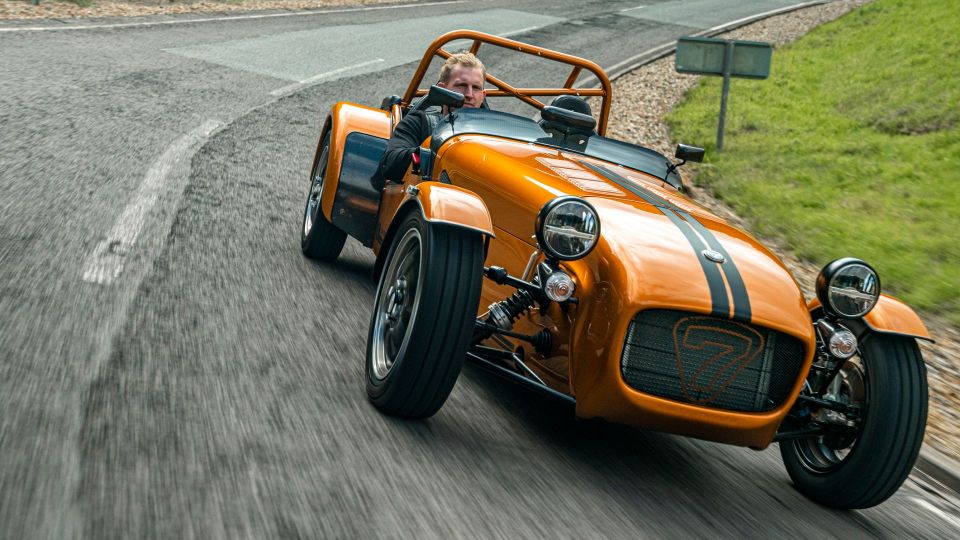
Having so little heft means this entry-level Caterham (£27,385, or £24,990 if you build it yourself) can make do with 85hp from a 660cc three-cylinder Suzuki engine: good for 0-62mph in 6.9 seconds and a very blustery 105mph. It also qualifies for compact ‘kei car’ status in Japan, where the majority will be sold.
You can have your Seven in softer 170S spec, but I sampled the hardcore 170R, with adjustable sports suspension, a Quaife limited-slip diff and hard-shell composite seats.
Mine also came loaded with options, including lashings of carbon fibre trim and Aston Martin Golden Saffron paint, bumping the price up to £32,605. Not quite such cheap thrills, then.
Fancy footwork
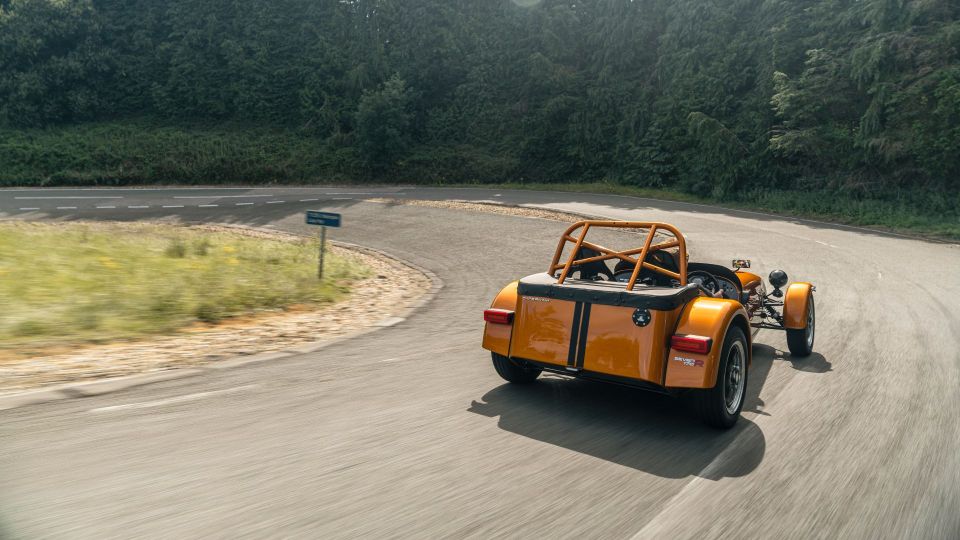
Strapping in with a four-point harness behind a tiny Momo wheel, the Caterham immediately feels like a racer for the road.
There are compromises, however. The footwell of the narrow-bodied 170 is so tight that I’m forced to drive with bare feet, or risk pressing two pedals at once. And the lack of a windscreen means sunglasses are essential, while a crash helmet is advisable beyond city speeds – unless you literally want flies in your teeth.
To be honest, the novelty of driving in a helmet wears thin very quickly, so I’d opt for a proper screen. Doing so also gives your ears unfettered access to the raspy three-pot engine, which serves up hilarious wastegate whistles on the over-run. It’s guaranteed to make you giggle. Official fuel economy of 58.4mpg might raise a smile, too.
Wake up, shake up
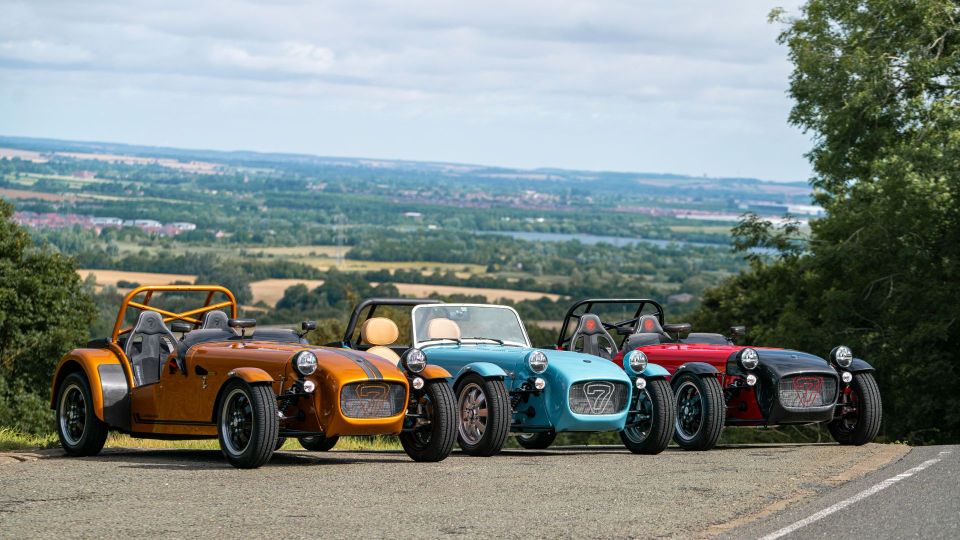
The 170R isn’t particularly fast, but short gear ratios (you’ll need fourth for 70mph), skinny 155-section tyres and being al fresco all add to the sensation of speed.
A lot of modern sports cars feel frustrating because you can rarely exploit their performance on the road. The Caterham is the opposite; you can wring it out almost anywhere.
Sitting almost atop the live rear axle, the tarmac inches from your elbows and a view of the front suspension jostling ahead, you’re acutely aware of the road and how the chassis reacts to its every nuance.
The steering feels disconcertingly direct at first, but you soon tune into its vivid, hyperactive responses. Compared to a ‘normal’ car, it feels like the Seven has downed a double espresso.
Cheaper thrills
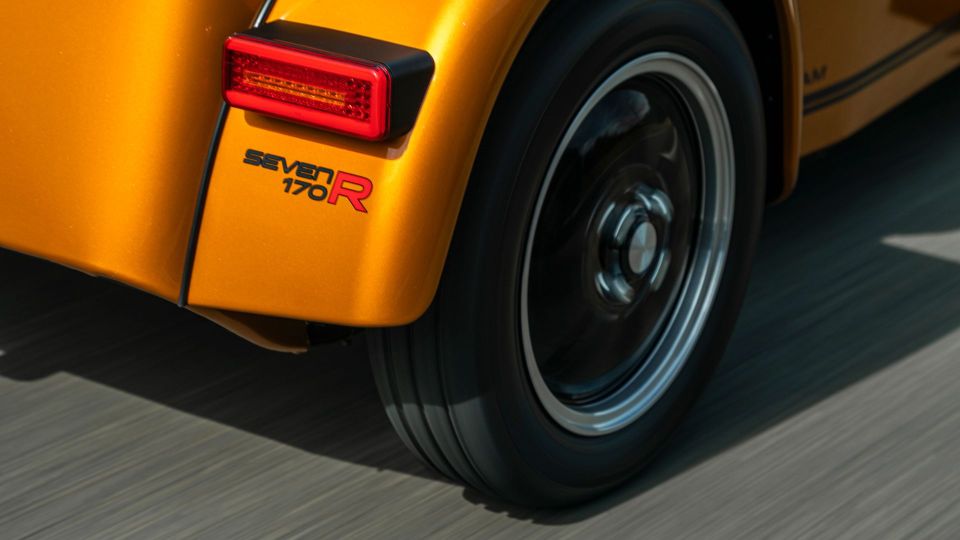
Unlike more powerful Caterhams – such as the 137hp Super Seven 1600 I tested last year – the 170R doesn’t have the oomph to easily break traction and behave like a hooligan. Well, unless the road is wet, of course, in which case you’ll be getting wet too.
While its limits are relatively low, though, the car has an alert, throttle-adjustable sense of balance, helped by the rear diff fitted to this ‘R’ version.
For about £200 a month (after a decent deposit), the Seven 170R offers an intense, all-consuming driving experience that makes every journey feel adventurous. I’d still choose one of the more powerful, four-cylinder models if your budget allows, but this is a great first rung on the Caterham ladder. Just don’t forget to tick the box marked ‘windscreen’.
Tim Pitt writes for Motoring Research
PRICE: £24,990
POWER: 85hp
0-62MPH: 6.9sec
TOP SPEED: 105mph
FUEL ECONOMY: 58.3mpg
CO2 EMISSIONS: 109g/km